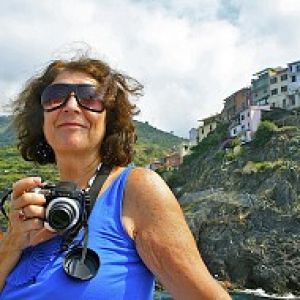Day 24 - Albelg for Bauhaus
A long blip but it’s my diary which I use for my subsequent Blurb book.
We couldn’t believe how lucky the car park was, only a minute’s walk from the most beautiful old town and totally quiet all night.
We walked to the market square and saw the town hall (1586) with its octagonal tower, the church Saint Nicolai (closed) and the most stunning 17th century building Alte Lateinschule with wooden carvings all round depicting the saints on one side with the virtues on another and more biblical scenes all round. We enjoyed a wander round the picturesque streets. I stopped at the bookshop and got #2 daughter an Anne Tyler book (in German) for €4. We saw behind us the famous Seiben Berge behind which Snow White was said to live with the Seven Dwarfs.
We then drove to the other side of town for the main event - I wonder how many people have a visit to a shoe last factory on their list of must-visit places in Germany. The Fagus factory built in 1911 was the first example of early modernist architecture by Walter Gropius who with Adolf Meyer established a practice in Berlin. It was the beginning of the Bauhaus movement and this factory’s facade with glass curtain walls demonstrated both the modernist principle that form reflects function and Gropius's concern with providing healthful conditions for the workers.
The factory is now regarded as one of the crucial founding monuments of European modernism and is a UNESCO site. We were the only visitors. €11 each. The exhibition was in both English and German. It was mainly about feet and shoes but also gave information about Gropius and the Bauhaus movement. There were interactive sections - I had fun matching the footwear to the celeb. What I had difficulty with was that the floorboards had gaps between each row and I could see through to the floor below and there were 5 floors of exhibition. It’s an irrational feeling as of course it was strong enough but I just had the sensation it would collapse.
Gropius’s career was halted by WW1 during which he was awarded the Iron Cross twice. In 1919 he became the head of the Saxon school of arts which became Bauhaus, attracting artists such as Kandinsky and Klee.
In 1923, Gropius designed his famous door handles, now considered an icon of 20th-century design and often listed as one of the most influential designs to emerge from Bauhaus. After many successful commissions he left Bauhaus in 1928. The rise of Hitler forced him to flee from Germany. Although not Jewish, he was associated with what the Nazis classified as “degenerate” art and his work dried up. He moved to Britain and then USA to teach at Harvard School of Design. He died in 1969.
We filled up with fuel, did a quick wine shop at Lidl (so cheap here) then drove on westwards to Ticklenberg, another small town in Germany. We got a ticket for 24 hour parking and walked up into the town. It was pretty, mainly black and white half-timbered buildings. The old square was given over to outdoor seating for cafes and was full of German tourists enjoying ice creams in the sun.
We left the car park and headed a few miles out of town to have a walk to a limestone canyon. This meant getting jabbed by wild brambles and stung by nettles on the overgrown path. The water below in the canyon was a pretty green. There were lots of bees and insects feeding on the wild flowers.
We came back to our €5 car park, now busy with people parking to have a wild night out in Tecklenberg. Not. Though somewhere near there is the largest open air theatre in Germany. I couldn’t get their site to show me dates anything was on.
Miles driven today 117.
- 34
- 0

Comments
Sign in or get an account to comment.


